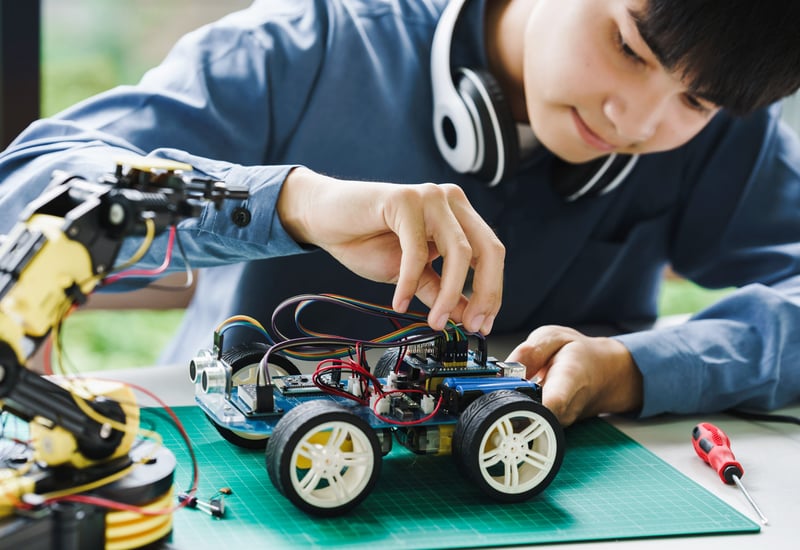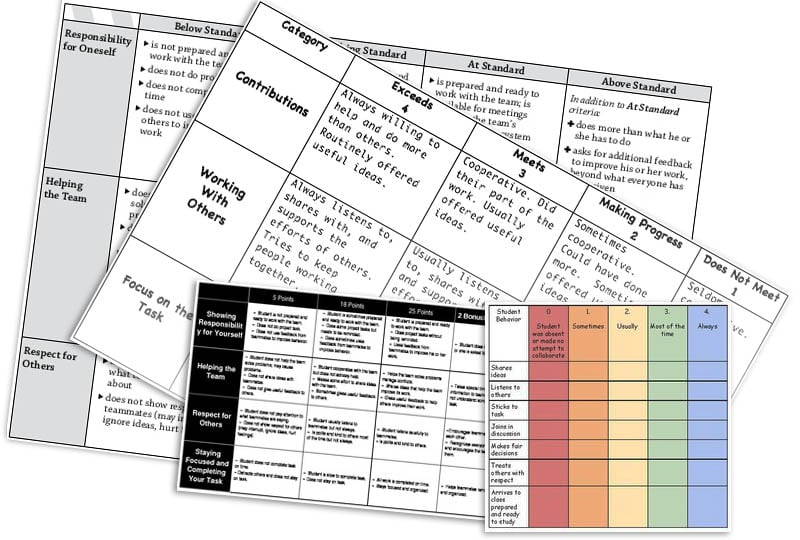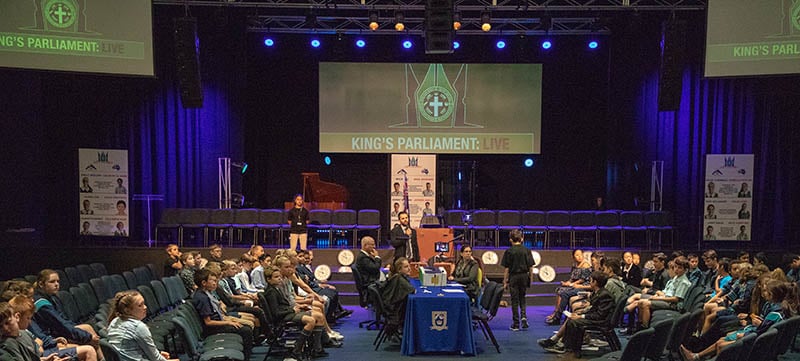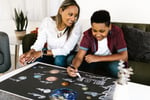
Ask most parents about their experience of school and the stories are often quite similar: Their teacher would talk and write on the board; students would listen and take down notes. You’d do exercises from a textbook, take tests, get grades… rinse and repeat. This ‘typical’ classroom is often pictured as one where desks are in rows, a teacher desk is at the front, students all have a textbook and notepad and the teacher begins the class by talking from the front. As the teacher talks, knowledge is assumed to have transferred from the teacher’s head to the students.
Reflecting on life at school, you’d often hear: "How is this relevant to my daily life?", "When will I use this after school?", "Why should I learn this?".
Consequently, many people’s opinion of school is negative, either because of a negative experience with a teacher or simply because of irrelevance. Schooling has continued like this for quite some time. In recent years, dramatic societal shifts have changed whole sectors of the community, yet schooling is no different.
We have the Internet as a global information and communications medium. Add to this the ubiquity of computing devices and teachers are no longer the source of all knowledge in the classroom. Instead, they are now a facilitator of it and a guide in discerning which knowledge is useful and how it can be applied effectively. Social media has also created collaboration by osmosis and this needs to be met head-on in the classroom or we become irrelevant – not because we are behind the times, but because we are not recognising both our changing world and our changing audience.
What is Project Based Learning?
According to Michael McDowell in his book 'Rigorous PBL by Design', project-based learning (PBL) can be defined as "a series of complex tasks that include planning and design, problem solving, decision-making, creating artefacts and communicating results" (McDowell, 2017:2).
PBL is characterised by the following:
- Learning is student-centred.
- Learning occurs in small groups.
- A tutor is present as facilitator and guide.
- Authentic problems are presented at the beginning of the learning sequence.
- The problems encountered are used as tools to achieve the required knowledge and the problem-solving skills necessary to eventually solve the problem.
- New information is acquired through self-directed learning.
One of the assumptions we have found hard to break is that PBL is a free-for-all and the teacher lets the students work it all out. The PBL we have invested in requires detailed teacher planning and strategic implementation to allow students the best learning experiences. Scaffolded tasks with integrated formative assessment allow teachers to ascertain where student gaps in learning are and address them throughout the project.
In this way, PBL becomes a rich learning experience for children incorporating some of best learning strategies around.
Why is this approach important for the future?
If we were to go back one hundred years, inventions like electricity and motorised carriages were superseding the age of steam and creating an unknown future.
The cycle is repeating itself again with inventions like the Internet, artificial intelligence and robotics. These aren’t science fiction anymore, they are the current reality and will change our world in as significant a way as the motor car did.
The use of PBL as a methodology for teaching meets these challenges head-on as it focuses on the development of the skills required in an uncertain future.
How will we solve the challenges of robots and artificial intelligence performing low to mid-level jobs? Will we need to be able to collaborate? Will the computer be capable of creative thought or solutions that require unrelated ideas to connect?
What are the benefits?
One of the key highlights of PBL is reflection opportunities for students. Teachers can read student perspectives on their work and discover a growing depth of understanding both throughout the project and afterwards. Benchmarks or checkpoints built into the project allow students to be formatively assessed and problems identified early in the process so that there is achievement developing throughout the course and no surprises where there is no work at the end.
The concept of rubrics for assessment of skills like collaboration and even growth mindset is another great benefit. Generally, rubrics are used for assessing students on a criteria, in this case, a student can be assessed on the right kind of behaviours along a sliding scale.

Examples of assessment rubrics
Students are then able to clearly understand what a healthy group environment looks like and can even self-assess these skills, as they are easy to read and understand. In this way, collaboration is more structured and goal-oriented. In the past it’s not been taught as a skill. PBL changes that and helps us build better collaborators.
"It’s much more interactive; it’s not just writing stuff down."
Other benefits include:
- More teacher discussion of student learning. Rather than the focus being on ‘what they will teach’, it is shifted to ‘how will the students learn?’.
- Better scaffolding of tasks so that assumptions like ‘students should know how to work in groups’ becomes ‘what strategies will I implement to help students learn how to work in a group effectively?'.
- Students' existing knowledge is identified so that gaps can be targeted and students can pinpoint what they need to know.
- Students are more active in their learning.
- More connections with the local community: doctors, town planners, fire department representatives, authors and many more have observed student projects and given real-world feedback.

Cementing their learnt knowledge of the Parliamentary process, King's Year 6 students researched, designed and replicated a 'Parliamentary debate' with a vote at the end.
What difference has it made to students?
King’s Christian College introduced PBL in 2016, following a visit from a Sydney school that had adopted PBL in their classrooms. The visiting school was not only achieving outstanding HSC results, but middle school students were able to describe what they were learning, articulate clearly why it was important and recognise how it connected with other ideas. In the teaching world, this is nothing short of a miracle. King’s wanted their students to have this type of work ethic and ability to articulate their learning in a meaningful way.
Today, PBL at King’s Christian College can be found throughout the school with a core focus being on the middle years of schooling from Years 5–8. Throughout these year levels you will find classes that are hives of activity. Groups might be discussing how they will solve a challenging driving question like: ‘What would happen if oil ran out tomorrow?’ Others might be participating in a group session where they discuss the team norms that they will agree to abide by. Still others may be checking the project-pacing chart to see where they are up to with completing the project and determining what their next steps might be.
"You feel less pushed around, you get to try things for yourself."
Since implementing PBL, King’s Christian College has found the turn-around incredible, and the responses to problems that some of the students are coming up with are simply amazing.
Cross-curricular relationships have enriched learning experiences for students. For example, the Science and Industrial Design and Technology departments partnered together to help students with a simple machines assignment. Students had hands-on experience to learn about and create gear systems for their science project.
Kids now come to school with a curiosity and passion for learning that is so exciting to be a part of. Furthermore, previously disengaged students are now much more motivated and taking ownership of their learning.
By Mal Galer, Director of Curriculum Innovation, King’s Christian College. This article was first published in 'Kids on the Coast' magazine on 17 December 2018.










